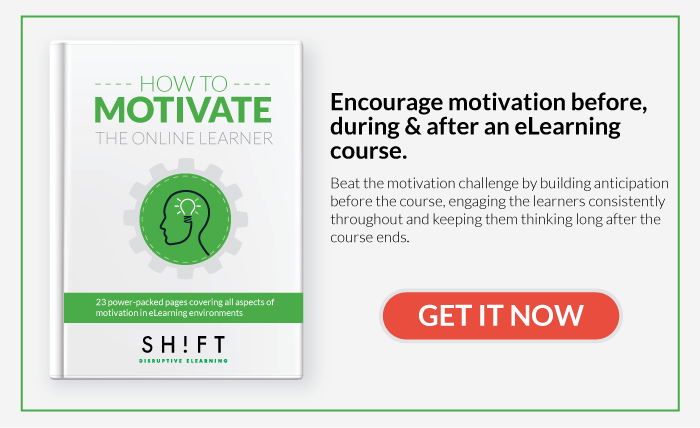In the ever-changing corporate world, where new technology one day becomes an ancient relic by the next, companies need to establish a culture of Lifelong Learning.
The old days of training your workforce one time and then never developing their skills and knowledge again? Those days are fading fast into the sunset!
"Employees who don’t spend at least 5 to 10 hours a week developing new skills will obsolete themselves with the technology,” - AT&T CEO Randall Stephenson
In response, companies are looking for ways to reinforce continuous learning in their workplaces.
Learning & Development programs need to move from those traditional one-time, hours-long training events, to always-on programs. Adopting one or several strategies to enable a continuous learning program in your workplace should be a priority in 2023 and beyond.
1) eLearning Courses Help Train Employees Anytime, Anywhere
The concept of continuous learning clashes with the traditional model of one-off training programs: The employee gets a new job. He/she goes into an instructor-led class three entire days a week. Time passes by without the employee ever receiving a piece of training again. An employee works until he/she gets a new job.
The problem: Learning in the workplace should be a non-stop process as long as the person remains in the company.
Companies need to move away from rigid, overly structured training programs. Modern employees are tech-savvy, plugged in, and on the go; over 80% expect more interactive learning experiences accessible anywhere and at any time. [1]
Enter responsive eLearning — online training that can be accessed wherever and whenever people want to learn. With responsive eLearning, HR managers don’t need to spend time training employees in person; they can instead find ways to help employees’ unique needs related to their personal career growth.
Employees, meanwhile, can view the eLearning courses on a variety of devices. They can start their training program in their office, and finish it on their living room couch. Or they can rise early and watch from their smartphone and pick up where they left off using a laptop in the company lounge.
After all, if your employees can access news, travel information, sports scores, shopping, and more anywhere they want — why wouldn’t you offer them equally easy access to your learning programs?
Recommended read: Why Responsive eLearning is Essential to Meet Modern Learner Needs
2) Have Employees Teach One Another
According to a report by learning platform company Degreed, 87% of employees said that sharing knowledge with their peers is critical for their learning. However, the report found that just one in three L&D companies is investing in social learning tools.
In social learning, employees learn from one another. Traditionally, this occurs through discussion, collaboration, and feedback. But technology can provide even more possibilities for continuous learning.
Companies today are most often turning to blogs, internal document repositories, videos, and podcasts, said Falana Thomas, an instructor at PPD, a company that specializes in contract research. These resources are usually available in a central location on the company’s intranet or website and serve as a nice supplement to formal one-time training events.
Rather than simply turning to Google to get questions answered, online users rely on your company's social networking and digital tools to learn from their peers. Since your employees are discovering content and learning information from one another out of work, it’s natural that they would expect these interactions to occur in the workplace as well.
It’s to your company’s advantage to allow employees to share knowledge with one another on your platform. For instance, Totara Social, an LMS creator, recommends using internal social media sites to enable collaboration and sharing of ideas. Some ideas include allowing for blog comments, employee-voted polls, and the “like” feature that allows employees to validate their peers’ ideas.
Using these social platforms and programs, employees can ask one another questions or seek out feedback on strategies that relate to their job. During annual reviews, managers can then focus on what the employee learned, what they want to learn, and how the company can support them with their goals.
Also read: Successfully Apply Social Learning to Your Existing eLearning Programs
3) Micro Learning Boosts Continous Learning
Modern workers want information, in short, sharp bursts. The Degreed 2019 report found that nearly 70% learn from peers or by reading blogs and articles and 53% access videos to learn. [2]
Setting up an environment where employees are always learning may raise eyebrows among those who are worried about company productivity.
But continuous learning doesn’t need to occur in large spurts. Microlearning offers employees the chance to learn in “bite-size” chunks throughout their days, weeks, months, and years on the job.
Employees can digest short videos or articles when they have the time: whether that is between tasks at work — or at home using a mobile phone, tablet, or laptop.
Not only does this make learning more convenient, but it also helps them to solve problems at the moment of need, said Christopher Pappas, founder of the online learning community eLearning Industry.
By focusing each lesson on one particular topic, learners can easily digest the material without experiencing “cognitive overload,” said Pappas. [3]
Quick tip: Try to include AI systems in your Micro-Learning process. AI recommends the next steps and content for each employee based on data like interests in a topic or a needed reinforcement if an employee performed poorly in a previous course.
Also read:
- Struggling to Train New Hires Effectively? Try Micro-Learning
- How to Turn Your Employees into Lifelong Learners
When it comes to learning and growth opportunities, employees are expecting more from their companies. They want to continually improve their skills, at work and on the go, and they want employers to help them achieve their individual goals.
Through eLearning, social learning platforms, and Micro Learning modules, your company has the opportunity to teach your employees continuously and help them grow in their careers. You’ll also find your own solutions along the way, enabling your training managers to focus on individual growth instead of leading monotonous training sessions for new hires.
What are some of the challenges you are currently facing in the learning and development context at your organization? Do you have an eLearning platform in place that supports Microlearning and Mobile Learning? Comment below! We'd love to hear :)
Recommended resources:
Video: Enabling Continuous Learning by Charles Jennings & Fuse
Continuous learning: it’s a mindset, not a technology or product
REFERENCES:
[1] Tauber, T., 2015. Investing in Learning Content: Redefining Priorities to Keep Up with the Modern Learner. Bersin by Deloitte, 2015.
[2] Degreed, 2019. How the Workforce Learns.
[4] Continuous Learning. Bersin by Deloitte http://www.bersin.com/lexicon/Details.aspx?id=12807
[5] Creating a continuous learning environment http://www2.deloitte.com/us/en/pages/finance/articles/cfo-insights-continuous-learning-environment.html
[6] The Four E’s: Your Fast Lane to Continuous Learning http://www.peoplefluent.com/blog/the-four-e-s-your-fast-lane-to-continuous-learning
[ 7] Reimagining L&D Capabilities to Drive Continuous Learning http://www.retailingtoday.com/sites/retailingtoday.com/files/Bersin-Continuous-Learnng-Cisco-Collaborative-Knowledge.pdf



